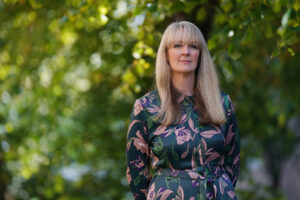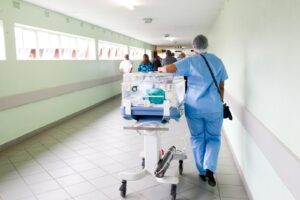Women’s access to fertility treatment ‘significantly higher’ in richer areas, study shows
Geographic access to IVF and other fertility services is significantly higher in the richest parts of Britain, according to a new study.
Researchers have warned the current location of clinics is likely reducing opportunities for those living in more deprived parts of the country to get fertility treatment, meaning opportunities to have a baby may be influenced by a geographical lottery.
In 2020 nearly a fifth of local authorities did not have fertility clinics within a radius of 25km, meaning 1.6m women of reproductive ages had no assisted fertility services nearby.
A similar number of women had access to only one fertility clinic within a radius of 25km of their local authority, resulting in approximately 3.2m women aged 18-50 with limited accessibility to fertility services.
Restricted geographic accessibility to fertility treatment may pose a substantial barrier, as it entails additional expenses, including travel costs and time off work, and may also lead to longer waiting times.
Nearly a third of local authorities with a total population of more than 2.8m women of reproductive age did not have available clinics offering IVF treatment in their area. These figures did not include any male partners affected by infertility.
Nearly 3m women lived in local authorities with no proximity to clinics providing IVF to NHS funded patients, and a further 2.4m women had access to only one clinic within 25km. This results in around 5.4m women who are living in areas with no or limited availability of clinics providing NHS-funded IVF services.
In London there were two or more clinics per 10,000 eligible women within a radius of 25km. The South East and the Midlands had a relatively high concentration of clinics while the North of England and the South West had the lowest rates of clinics available per population of women of reproductive age.
Most local authorities with limited access to these services were in the North, including the Yorkshire and Humberside region, and in the South West.
Dr Nitzan Peri-Rotem of Exeter University, one of the researchers behind the study, said: ‘We have found that the accessibility of fertility clinics is strongly linked with area-level measures of economic wealth. Accessibility to fertility treatment is significantly higher in local authorities with greater average household income. In addition, the clinics rate in more deprived local authorities is lower by around 30 per cent than that in the least deprived areas.
‘The lower clinics rate in more deprived local authorities may further hinder the likelihood of seeking medical help and usage of assisted reproduction technologies among those living in these areas.’
Fellow researcher, Professor Anna Mountford-Zimdars, also of Exeter University, said: ‘Given the limited provision of publicly funded IVF treatment in England, reduced geographic accessibility to fertility clinics is likely to exacerbate existing inequalities in access to medically assisted reproduction.
‘We hope these findings can be used to inform future planning of fertility services in England. A more strategic approach for setting the location of fertility services providers would contribute to improved accessibility and to reducing existing barriers to assisted reproduction. Extending the provision of funded fertility treatment across England, in accordance with the recommendations of the National Institute for Health and Care Excellence will also increase access, particularly for more deprived groups.’
Image: Jonathan Borba
















